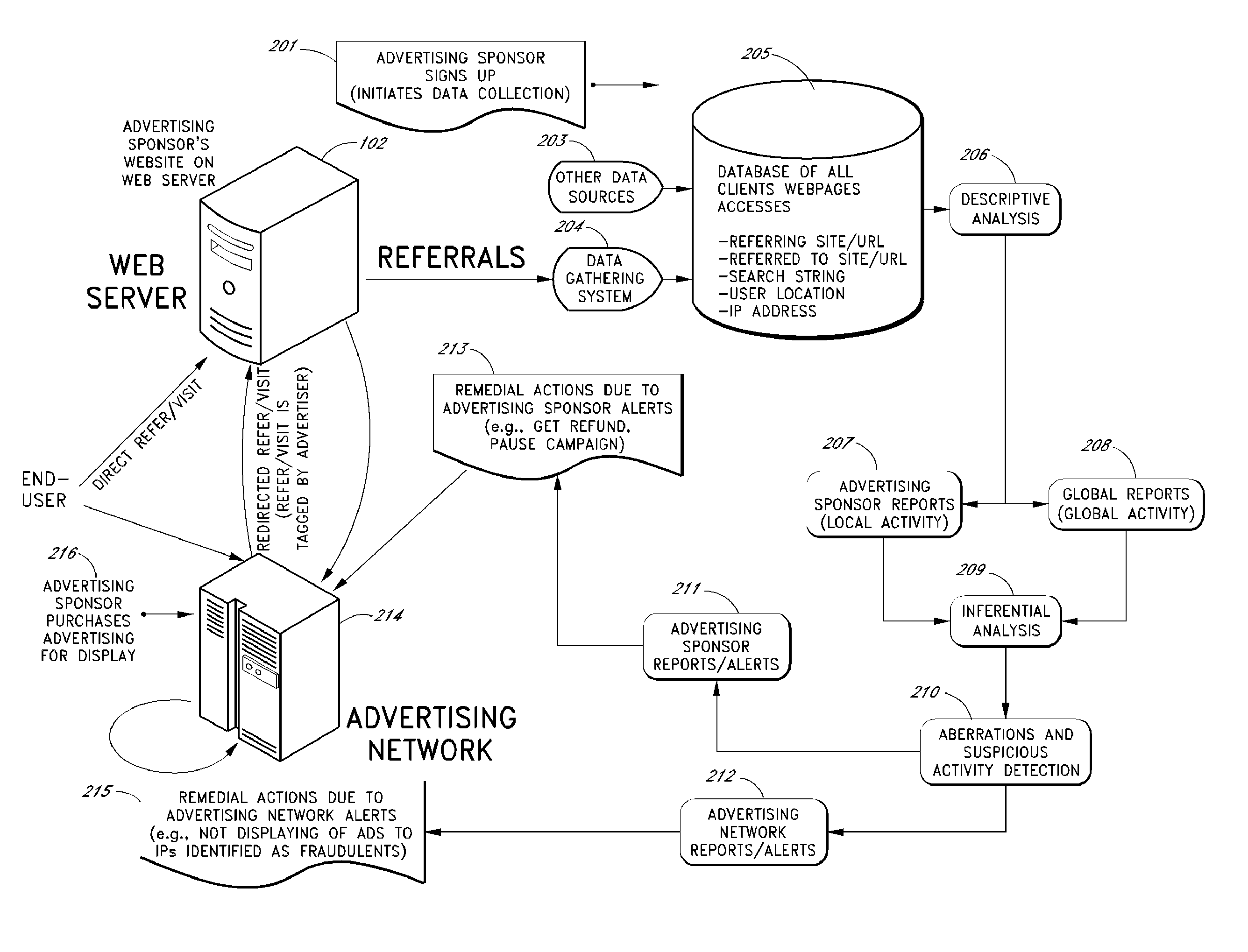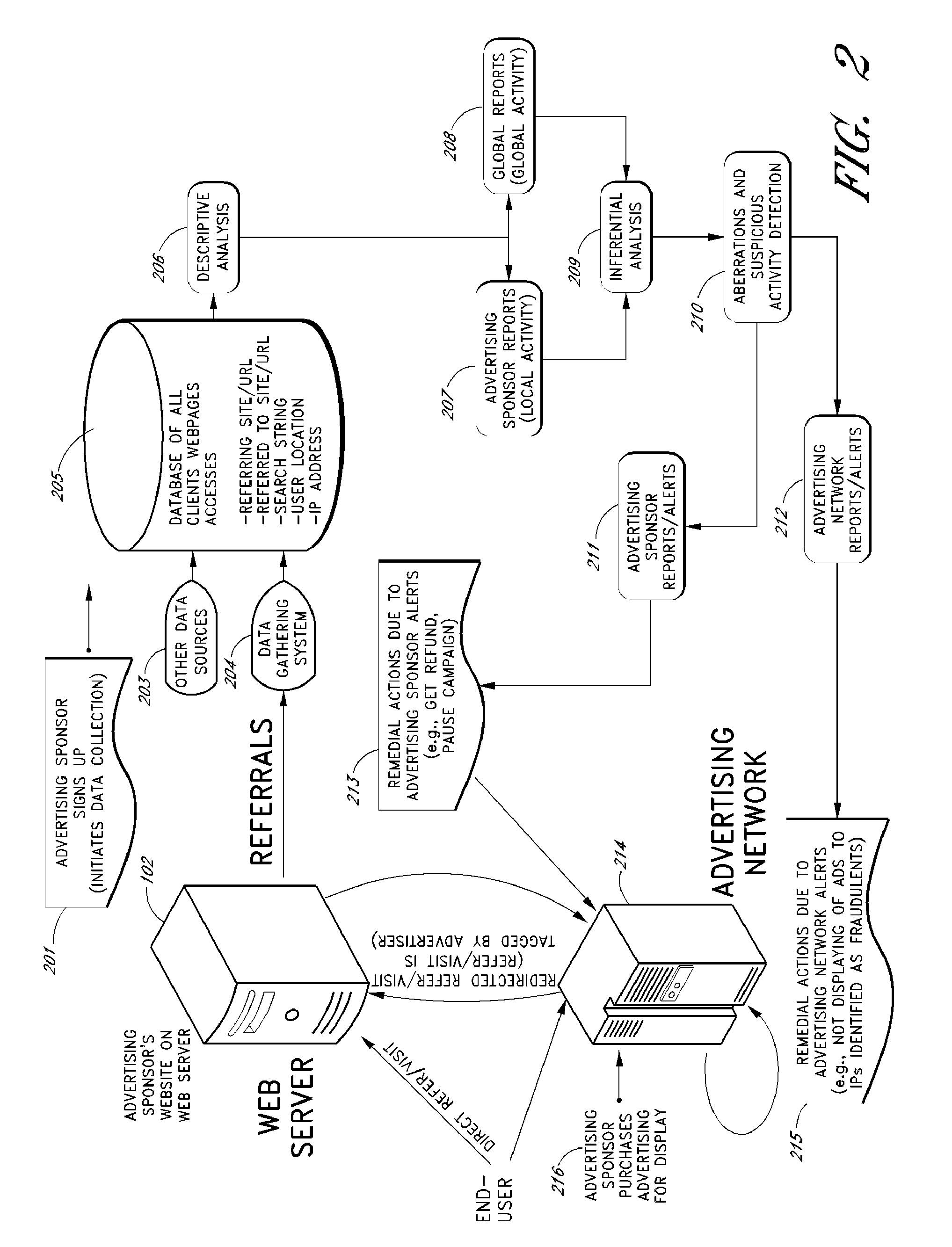Click fraud detection
a fraud detection and click technology, applied in the field of network traffic analysis, can solve the problems of conflict of interests, fraud of online advertising services, and little incentive for the advertising network to detect fraudulent clicks
- Summary
- Abstract
- Description
- Claims
- Application Information
AI Technical Summary
Benefits of technology
Problems solved by technology
Method used
Image
Examples
Embodiment Construction
[0026]The following description of certain preferred embodiments illustrates some of the ways the various inventive features can be implemented. Nothing in this description is intended to imply that any particular feature, step or component is essential to the invention. The invention is defined only by the claims.
[0027]A search engine typically operates by crawling websites to retrieve electronic documents and other types of data (e.g., web pages word processing documents, PDF files, presentation documents, text files, multimedia files, etc), and by generating an index of these items based on the electronic documents or metadata therein. When a user submits a search query, the search engine compares the search query to the index to identify any responsive items, and ranks the responsive items for display. The ranked search result set is typically made available to the user over multiple search results pages, with the first search results page displaying the top N (e.g., ten) result...
PUM
 Login to View More
Login to View More Abstract
Description
Claims
Application Information
 Login to View More
Login to View More - R&D
- Intellectual Property
- Life Sciences
- Materials
- Tech Scout
- Unparalleled Data Quality
- Higher Quality Content
- 60% Fewer Hallucinations
Browse by: Latest US Patents, China's latest patents, Technical Efficacy Thesaurus, Application Domain, Technology Topic, Popular Technical Reports.
© 2025 PatSnap. All rights reserved.Legal|Privacy policy|Modern Slavery Act Transparency Statement|Sitemap|About US| Contact US: help@patsnap.com



